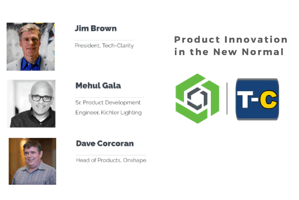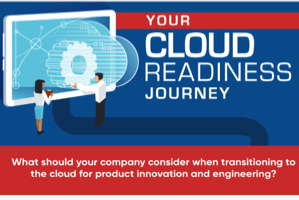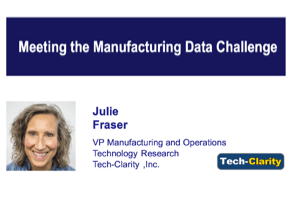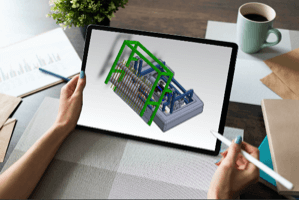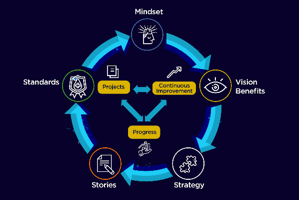How can manufacturers innovate through today’s global industry disruption and set themselves up for success as things settle into a new normal? Hear from Kichler Lighting’s Mehul Gala, Tech-Clarity’s Jim Brown, and Onshape’s Dave Corcoran. They’ll share their perspectives on how companies are adapting to the new reality and preparing for the future by: Enabling…
- Enabling remote work
- Eliminating “wasted-time”
- Reducing design cycles
- Improving efficiency
- Preparing for “what’s next” by becoming more resilient and flexible


 [post_title] => Product Innovation in the new Normal (webcast)
[post_excerpt] =>
[post_status] => publish
[comment_status] => open
[ping_status] => open
[post_password] =>
[post_name] => product-innovation-webcast
[to_ping] =>
[pinged] =>
[post_modified] => 2022-11-14 22:27:04
[post_modified_gmt] => 2022-11-15 03:27:04
[post_content_filtered] =>
[post_parent] => 0
[guid] => https://tech-clarity.com/?p=10043
[menu_order] => 0
[post_type] => post
[post_mime_type] =>
[comment_count] => 0
[filter] => raw
)
[1] => WP_Post Object
(
[ID] => 10015
[post_author] => 2
[post_date] => 2020-12-01 14:59:01
[post_date_gmt] => 2020-12-01 19:59:01
[post_content] => What did leading engineering software industry analysts think of the first virtual Autodesk University? What are their key takeaways from AU2020? Hear the discussion with Lifecycle Insights Chad Jackson, CIMdata’s Stan Przybylinksi, and Tech-Clarity's Jim Brown led by Taxal’s Allan Behrens.
[post_title] => Product Innovation in the new Normal (webcast)
[post_excerpt] =>
[post_status] => publish
[comment_status] => open
[ping_status] => open
[post_password] =>
[post_name] => product-innovation-webcast
[to_ping] =>
[pinged] =>
[post_modified] => 2022-11-14 22:27:04
[post_modified_gmt] => 2022-11-15 03:27:04
[post_content_filtered] =>
[post_parent] => 0
[guid] => https://tech-clarity.com/?p=10043
[menu_order] => 0
[post_type] => post
[post_mime_type] =>
[comment_count] => 0
[filter] => raw
)
[1] => WP_Post Object
(
[ID] => 10015
[post_author] => 2
[post_date] => 2020-12-01 14:59:01
[post_date_gmt] => 2020-12-01 19:59:01
[post_content] => What did leading engineering software industry analysts think of the first virtual Autodesk University? What are their key takeaways from AU2020? Hear the discussion with Lifecycle Insights Chad Jackson, CIMdata’s Stan Przybylinksi, and Tech-Clarity's Jim Brown led by Taxal’s Allan Behrens.
[embed]http://https://youtu.be/QzrfC-P3gs0[/embed] [post_title] => Analyst Perspectives on Autodesk University 2020 [post_excerpt] => [post_status] => publish [comment_status] => open [ping_status] => open [post_password] => [post_name] => autodesk-university-2020 [to_ping] => [pinged] => [post_modified] => 2022-11-14 22:25:57 [post_modified_gmt] => 2022-11-15 03:25:57 [post_content_filtered] => [post_parent] => 0 [guid] => https://tech-clarity.com/?p=10015 [menu_order] => 0 [post_type] => post [post_mime_type] => [comment_count] => 0 [filter] => raw ) [2] => WP_Post Object ( [ID] => 10001 [post_author] => 2574 [post_date] => 2020-11-27 10:00:39 [post_date_gmt] => 2020-11-27 15:00:39 [post_content] =>
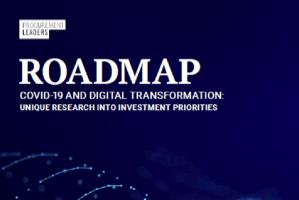 Have procurement organizations re-focused digital transformation investments due to COVID-19?
Yes. Priorities are radically different, as the research shows behind Roadmap - COVID-19 and Digital Transformation: Unique Research Into Investment Priorities. What has changed is that companies are more focused on creating abilities to work remotely, connect, see, and analyze what’s going on in supply. They are less likely to focus on backward-facing performance metrics since historical patterns no longer apply.
This article is based on primary research into what procurement projects companies have accelerated or postponed due to COVID-19. It is a detailed look at where companies are investing and not right now.
It also explores whether these changes are likely to remain in place. Tech-Clarity’s Julie Fraser is quoted on page 9, predicting this is a new normal. “Business processes, such as forecasting and inventory planning, which relied on data feeds from backwards-looking systems, are no longer quite as important. History is far less relevant now. Instead, it makes sound sense to invest in projects that provide a competitive edge, to help procurement organisations deal with this new normal.”
We are pleased to contribute to this fascinating look at COVID-19 and Digital Transformation in procurement. The research was sponsored by Amazon Business UK, and the article written by Malcolm Wheatley.
To download the full article, please visit Procurement Leaders (registration required).
[post_title] => Roadmap: COVID-19 and Digital Transformation in Procurement Leaders (article)
[post_excerpt] =>
[post_status] => publish
[comment_status] => open
[ping_status] => open
[post_password] =>
[post_name] => covid-19-digital-transformation
[to_ping] =>
[pinged] =>
[post_modified] => 2022-11-14 22:25:57
[post_modified_gmt] => 2022-11-15 03:25:57
[post_content_filtered] =>
[post_parent] => 0
[guid] => https://tech-clarity.com/?p=10001
[menu_order] => 0
[post_type] => post
[post_mime_type] =>
[comment_count] => 0
[filter] => raw
)
[3] => WP_Post Object
(
[ID] => 9984
[post_author] => 2
[post_date] => 2020-11-16 11:56:19
[post_date_gmt] => 2020-11-16 16:56:19
[post_content] =>
Have procurement organizations re-focused digital transformation investments due to COVID-19?
Yes. Priorities are radically different, as the research shows behind Roadmap - COVID-19 and Digital Transformation: Unique Research Into Investment Priorities. What has changed is that companies are more focused on creating abilities to work remotely, connect, see, and analyze what’s going on in supply. They are less likely to focus on backward-facing performance metrics since historical patterns no longer apply.
This article is based on primary research into what procurement projects companies have accelerated or postponed due to COVID-19. It is a detailed look at where companies are investing and not right now.
It also explores whether these changes are likely to remain in place. Tech-Clarity’s Julie Fraser is quoted on page 9, predicting this is a new normal. “Business processes, such as forecasting and inventory planning, which relied on data feeds from backwards-looking systems, are no longer quite as important. History is far less relevant now. Instead, it makes sound sense to invest in projects that provide a competitive edge, to help procurement organisations deal with this new normal.”
We are pleased to contribute to this fascinating look at COVID-19 and Digital Transformation in procurement. The research was sponsored by Amazon Business UK, and the article written by Malcolm Wheatley.
To download the full article, please visit Procurement Leaders (registration required).
[post_title] => Roadmap: COVID-19 and Digital Transformation in Procurement Leaders (article)
[post_excerpt] =>
[post_status] => publish
[comment_status] => open
[ping_status] => open
[post_password] =>
[post_name] => covid-19-digital-transformation
[to_ping] =>
[pinged] =>
[post_modified] => 2022-11-14 22:25:57
[post_modified_gmt] => 2022-11-15 03:25:57
[post_content_filtered] =>
[post_parent] => 0
[guid] => https://tech-clarity.com/?p=10001
[menu_order] => 0
[post_type] => post
[post_mime_type] =>
[comment_count] => 0
[filter] => raw
)
[3] => WP_Post Object
(
[ID] => 9984
[post_author] => 2
[post_date] => 2020-11-16 11:56:19
[post_date_gmt] => 2020-11-16 16:56:19
[post_content] =>  How do companies improve profitability by monitoring, analyzing, and optimizing equipment via the Industrial IoT? How has the COVID-19 pandemic impacted their plans? See what our survey of over 200 companies that manufacture, operate, service, sell, distribute, install, and/or integrate equipment finds about how the leaders operate in Tech-Clarity’s Pillars of Machine Monitoring and Optimization.
Please enjoy the summary* below. Please visit our sponsor Siemens MindSphere® for the full research (registration required).
Learn more about machine monitoring and optimization and find how to get started by visiting our sponsor, Siemens MindSphere®.
How do companies improve profitability by monitoring, analyzing, and optimizing equipment via the Industrial IoT? How has the COVID-19 pandemic impacted their plans? See what our survey of over 200 companies that manufacture, operate, service, sell, distribute, install, and/or integrate equipment finds about how the leaders operate in Tech-Clarity’s Pillars of Machine Monitoring and Optimization.
Please enjoy the summary* below. Please visit our sponsor Siemens MindSphere® for the full research (registration required).
Learn more about machine monitoring and optimization and find how to get started by visiting our sponsor, Siemens MindSphere®.
Table of Contents
- Strategies
- Benefits
- Monitoring and Optimization is Transformational
- Challenges
- Impacts of COVID-19
- How Can Companies Improve Performance?
- Pillar 1: Strategy and Organization
- Pillar 2: Connect and Communicate
- Pillar 3: Monitor and Analyze - Prepare Data
- Pillar 3: Monitor and Analyze - Analyze Data
- Pillar 4: Notify and Act
- Pillar 5: Enabling Technology - Systems
- Pillar 5: Enabling Technology - Integration
- Key Findings and Conclusions
- About the Research
- Acknowledgments
Monitoring and Optimization is Transformational
Machine Monitoring Benefits are Strategic Beyond direct benefits, monitoring equipment via the industrial IoT is the foundation for greater business impact. Most survey takers report that their equipment monitoring strategy is part of one or more broader corporate initiatives. Machine monitoring and optimization supports a variety of important business initiatives including digital transformation, smart manufacturing, and service transformation. It can also help fuel continuous improvement programs such as Six Sigma, as reported by one-half of surveyed companies. Very few, only 2%, are pursuing it as a standalone strategy. IoT Machine Monitoring is Essential Machine monitoring and optimization drives success by fueling digital transformation. A recent, but separate, Tech-Clarity survey shows that more than one-half of manufacturers say digital transformation is “important” if not “critical” to achieving their business strategy. This is particularly true in these challenging times. As evidence, another study finds that the vast majority of companies have either increased their focus and/or accelerated their digital transformation efforts or at least maintained their current level of focus. Machine monitoring is much more than a tactical, operational initiative; it lays the structure for much broader digitalization.
Machine monitoring and optimization drives success by fueling digital transformation. A recent, but separate, Tech-Clarity survey shows that more than one-half of manufacturers say digital transformation is “important” if not “critical” to achieving their business strategy. This is particularly true in these challenging times. As evidence, another study finds that the vast majority of companies have either increased their focus and/or accelerated their digital transformation efforts or at least maintained their current level of focus. Machine monitoring is much more than a tactical, operational initiative; it lays the structure for much broader digitalization.
Key Findings and Conclusions
Companies are Actively Pursuing Machine Monitoring Over three-quarters (84%) of surveyed companies are pursuing machine monitoring and optimization, and another 13% plan to. Most companies are pursuing it as a part of a larger digital transformation, smart manufacturing, or service transformation initiative; as continuous improvement; or a combination of these. Machine Monitoring and Optimization Drives Benefits Companies are pursuing – and achieving – business goals by implementing machine monitoring and optimization. Initiatives to monitor and improve equipment are resulting in improved profitability in the vast majority of companies. Top Performers Gain More Value from their Approaches Over one-half (54%) of Top Performers, those that are executing better at our pillars of machine monitoring, report they have significantly improved profitability. These leaders are leveraging best practices and technologies to support machine monitoring and optimization. They are:- Almost twice as likely to have an executive responsible for their strategy
- More likely to combine machine data with enterprise systems, engineering data, and environmental data in addition to operational systems
- Twice as likely to use prescriptive methods to act on data (although it’s still an emerging practice and only a small percentage have adopted this)
- 50% more likely to initiate actions by notifying operators with push notification in job-specific apps, and 75% more likely to be able to act on information in near real-time
 How can manufacturers maximize value from their digital transformation efforts in 2021? In these uncertain times, it matters. There are some basics to leveraging Industry 4.0 trends. Success may be closer to your grasp than you realize.
This live webinar has passed, but please click here to watch it free, on-demand. Find out where trends are taking us and hear examples of how other manufacturers are already gaining benefits:
How can manufacturers maximize value from their digital transformation efforts in 2021? In these uncertain times, it matters. There are some basics to leveraging Industry 4.0 trends. Success may be closer to your grasp than you realize.
This live webinar has passed, but please click here to watch it free, on-demand. Find out where trends are taking us and hear examples of how other manufacturers are already gaining benefits:
- Agility and flexibility: Can you handle uncertainty and respond as the market changes? This is at the heart of Industry 4.0. It's also crucial to navigating the effects of COVID-19.
- Build from a strong foundation: Will your new technology projects fail? Discover why they are doomed unless you have strong enterprise systems as underpinning.
- Smooth data flows: Do your people always have a clear source of the truth? Why master data management is essential to speed and agility of response.
- New business models: Can your company stay profitable and competitive in 2021? How manufacturers can move toward added-value services, improving sustainability, and new channels to market.
 Tech-Clarity’s eBook, What’s the Cost of Poor Collaboration? examines this topic for product development, sharing survey results from 155 manufacturers. Collaboration impacts every part of product development, and products cannot be developed or brought to market without it. While collaboration can be abstract and hard to measure, it's impact can be significant, especially when it is poor. The research reveals how it impacts your product design and development processes. It also identifies six areas of opportunity for collaboration improvements that can boost product profitability for your company.
Please enjoy the summary* below. For the full research, please visit our sponsor, Dassault Systèmes SOLIDWORKS (registration required).
Tech-Clarity’s eBook, What’s the Cost of Poor Collaboration? examines this topic for product development, sharing survey results from 155 manufacturers. Collaboration impacts every part of product development, and products cannot be developed or brought to market without it. While collaboration can be abstract and hard to measure, it's impact can be significant, especially when it is poor. The research reveals how it impacts your product design and development processes. It also identifies six areas of opportunity for collaboration improvements that can boost product profitability for your company.
Please enjoy the summary* below. For the full research, please visit our sponsor, Dassault Systèmes SOLIDWORKS (registration required).
Table of Contents
- Executive Summary
- What's Most Important for Design Team Success
- The Cost of Poor Collaboration on Engineers
- The Cost of Poor Collaboration on the Business
- Why Collaboration is So Critical
- Collaboration Requirements Have Increased
- Identifying Best Practices
- 1. Improve Engineering Efficiency
- 2. Recognize Collaboration Requirements
- 3. Provide Non-CAD Users Visibility to CAD
- 4. Improve Engineering / Manufacturing Collaboration
- 5. Connect Engineers and Simulation Analysts throughout the Design Process
- 6. Support Market Validation with Improved Customer Collaboration
- Recommendations
- About the Research
- Acknowledgments
Executive Summary
Collaboration Impacts Engineering Efficiency Survey results show that engineering efficiency is the top goal for product development success. Effective collaboration is critical for improving efficiency, yet many companies struggle with it, while others don't recognize the underlying connection between the two.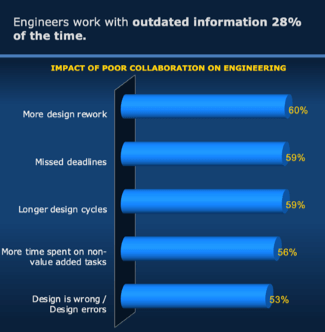 While poor collaboration is not a new problem, its cost has never been higher. Today's complex products and
the ecosystems we develop them in have raised collaboration needs so much, 40% of engineering time is now directly impacted by their ability to work together. With this much time affected, poor collaboration can cost companies significantly. While many companies struggle with steep competition, shrinking margins, and uncertain economic times, this is a risk few can afford.
Poor Collaboration has a Business Cost
Unfortunately, poor collaboration is so common, engineers report they work with outdated data 28% of the time. This results in more rework, delays, and errors. These negative business impacts mean lower-quality products, higher costs, missed deadlines, and delays in time to market.
In fact, what has traditionally worked in the past is no longer enough to stay competitive in today's market. An overwhelming 93% of companies report they need to improve collaboration with different groups. On average, engineers say they collaborate with 21 people on simple products and 35 for more complex products. Collaborators include other engineers, manufacturing, suppliers, customers, product managers, and more. On top of all the other design responsibilities, that's a lot of people to manage, work to keep track of, and risk for errors, without helpful solutions in place. No wonder the cost of poor collaboration is so high!
New Opportunities for Solutions
Many companies just live with their collaboration challenges, but as collaboration needs increase, these problems become harder and harder to ignore. As new technologies, such as the cloud and innovation platforms, break down silos and collaboration barriers, companies can benefit from new approaches to solve these challenges. Those who do should gain a competitive advantage.
While poor collaboration is not a new problem, its cost has never been higher. Today's complex products and
the ecosystems we develop them in have raised collaboration needs so much, 40% of engineering time is now directly impacted by their ability to work together. With this much time affected, poor collaboration can cost companies significantly. While many companies struggle with steep competition, shrinking margins, and uncertain economic times, this is a risk few can afford.
Poor Collaboration has a Business Cost
Unfortunately, poor collaboration is so common, engineers report they work with outdated data 28% of the time. This results in more rework, delays, and errors. These negative business impacts mean lower-quality products, higher costs, missed deadlines, and delays in time to market.
In fact, what has traditionally worked in the past is no longer enough to stay competitive in today's market. An overwhelming 93% of companies report they need to improve collaboration with different groups. On average, engineers say they collaborate with 21 people on simple products and 35 for more complex products. Collaborators include other engineers, manufacturing, suppliers, customers, product managers, and more. On top of all the other design responsibilities, that's a lot of people to manage, work to keep track of, and risk for errors, without helpful solutions in place. No wonder the cost of poor collaboration is so high!
New Opportunities for Solutions
Many companies just live with their collaboration challenges, but as collaboration needs increase, these problems become harder and harder to ignore. As new technologies, such as the cloud and innovation platforms, break down silos and collaboration barriers, companies can benefit from new approaches to solve these challenges. Those who do should gain a competitive advantage.
Recommendations
Next Steps Based on industry experience and research for this report, Tech-Clarity offers the following recommendations:- Understand the true cost of poor collaboration on both engineers and the entire company.
- Invest in collaboration improvements to increase engineering efficiency.
- Recognize the significance of collaboration requirements on engineers from the number of people involved, different departments, and processes impacted.
- Do not overlook the importance of engineering collaboration with non-CAD users.
- Ensure excellent collaboration between engineering and manufacturing to overcome knowledge gaps and support seamless hand-offs.
- Support effective collaboration between design engineers and simulation analysts to empower engineers to catch problems and design more competitive products.
- Incorporate customer collaboration into product development processes to support ongoing market validation and reduce the risk around market uncertainty.
- Consider modern technologies, such as cloud and an innovation platform, to support and enable better collaboration processes.
 What happens when automation and plant IT teams get past their differences and work together effectively?
A chance for the company to outperform the competition and make progress on Industry 4.0 projects, based on more coherent manufacturing data management.
In our recent research, Top Performers were more likely to have tightly connected IT and automation or operations technology (OT) organizations. This article provides highlights of the recent research, The Manufacturing Data Challenge: Lessons from Top Performers.
The article touches on investments, integration, and where Top Performers really outshine others in people, process, and technology.
Please visit Automation World to read the article.
Please visit our sponsor, Critical Manufacturing, for the full research (registration required).
[post_title] => The Challenge of Manufacturing Data Management (article)
[post_excerpt] =>
[post_status] => publish
[comment_status] => open
[ping_status] => open
[post_password] =>
[post_name] => manufacturing-data-management-article
[to_ping] =>
[pinged] =>
[post_modified] => 2022-11-14 22:25:56
[post_modified_gmt] => 2022-11-15 03:25:56
[post_content_filtered] =>
[post_parent] => 0
[guid] => https://tech-clarity.com/?p=9918
[menu_order] => 0
[post_type] => post
[post_mime_type] =>
[comment_count] => 0
[filter] => raw
)
[7] => WP_Post Object
(
[ID] => 9858
[post_author] => 2
[post_date] => 2020-10-14 20:50:40
[post_date_gmt] => 2020-10-15 00:50:40
[post_content] => What should your company consider when transitioning to the cloud for innovation and engineering? Our new infographic identifies key considerations ranging from strategy through adoption.
See the infographics for some important factors related to strategy, functionality, governance, existing solutions, and your transition.
You can also learn more about cloud solutions from Siemens Digital Industries Software, our sponsor or view our video series sharing insights from our research and interviews including: Digital Transformation Progress with Bob Jones, Cloud Progress Report with Bill Boswell, and Siemens Digital Transformation Progress with Brenda Discher.
What happens when automation and plant IT teams get past their differences and work together effectively?
A chance for the company to outperform the competition and make progress on Industry 4.0 projects, based on more coherent manufacturing data management.
In our recent research, Top Performers were more likely to have tightly connected IT and automation or operations technology (OT) organizations. This article provides highlights of the recent research, The Manufacturing Data Challenge: Lessons from Top Performers.
The article touches on investments, integration, and where Top Performers really outshine others in people, process, and technology.
Please visit Automation World to read the article.
Please visit our sponsor, Critical Manufacturing, for the full research (registration required).
[post_title] => The Challenge of Manufacturing Data Management (article)
[post_excerpt] =>
[post_status] => publish
[comment_status] => open
[ping_status] => open
[post_password] =>
[post_name] => manufacturing-data-management-article
[to_ping] =>
[pinged] =>
[post_modified] => 2022-11-14 22:25:56
[post_modified_gmt] => 2022-11-15 03:25:56
[post_content_filtered] =>
[post_parent] => 0
[guid] => https://tech-clarity.com/?p=9918
[menu_order] => 0
[post_type] => post
[post_mime_type] =>
[comment_count] => 0
[filter] => raw
)
[7] => WP_Post Object
(
[ID] => 9858
[post_author] => 2
[post_date] => 2020-10-14 20:50:40
[post_date_gmt] => 2020-10-15 00:50:40
[post_content] => What should your company consider when transitioning to the cloud for innovation and engineering? Our new infographic identifies key considerations ranging from strategy through adoption.
See the infographics for some important factors related to strategy, functionality, governance, existing solutions, and your transition.
You can also learn more about cloud solutions from Siemens Digital Industries Software, our sponsor or view our video series sharing insights from our research and interviews including: Digital Transformation Progress with Bob Jones, Cloud Progress Report with Bill Boswell, and Siemens Digital Transformation Progress with Brenda Discher.
 [post_title] => Cloud Readiness (infographic)
[post_excerpt] =>
[post_status] => publish
[comment_status] => open
[ping_status] => open
[post_password] =>
[post_name] => cloud-readiness-infographic
[to_ping] =>
[pinged] =>
[post_modified] => 2022-11-14 22:26:09
[post_modified_gmt] => 2022-11-15 03:26:09
[post_content_filtered] =>
[post_parent] => 0
[guid] => https://tech-clarity.com/?p=9858
[menu_order] => 0
[post_type] => post
[post_mime_type] =>
[comment_count] => 0
[filter] => raw
)
[8] => WP_Post Object
(
[ID] => 9818
[post_author] => 2574
[post_date] => 2020-10-08 12:50:19
[post_date_gmt] => 2020-10-08 16:50:19
[post_content] =>
[post_title] => Cloud Readiness (infographic)
[post_excerpt] =>
[post_status] => publish
[comment_status] => open
[ping_status] => open
[post_password] =>
[post_name] => cloud-readiness-infographic
[to_ping] =>
[pinged] =>
[post_modified] => 2022-11-14 22:26:09
[post_modified_gmt] => 2022-11-15 03:26:09
[post_content_filtered] =>
[post_parent] => 0
[guid] => https://tech-clarity.com/?p=9858
[menu_order] => 0
[post_type] => post
[post_mime_type] =>
[comment_count] => 0
[filter] => raw
)
[8] => WP_Post Object
(
[ID] => 9818
[post_author] => 2574
[post_date] => 2020-10-08 12:50:19
[post_date_gmt] => 2020-10-08 16:50:19
[post_content] => 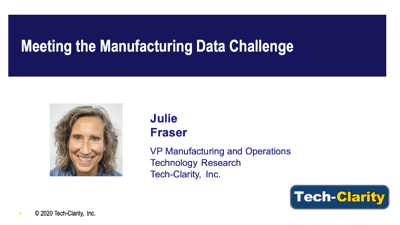 What do manufacturers need to do to succeed and get results from their Industry 4.0 efforts?
In this webcast, Julie Fraser revealed a few significant findings of research of over 300 companies on the topic of manufacturing data management. It’s a multi-faceted challenge in which people, processes, and technology all matter.
This webcast explains the new Tech-Clarity research report’s findings, The Manufacturing Data Challenge: Lessons from Top Performers. Attend to learn what Top Performers are doing differently than others to improve dramatically on both operational and business key performance indicators (KPIs).
Register now to hear about this ground-breaking research, sponsored by Critical Manufacturing (registration required).
[post_title] => Meeting the Manufacturing Data Management Challenge (webcast)
[post_excerpt] =>
[post_status] => publish
[comment_status] => open
[ping_status] => open
[post_password] =>
[post_name] => manufacturing-data-management-webcast
[to_ping] =>
[pinged] =>
[post_modified] => 2022-11-14 22:27:02
[post_modified_gmt] => 2022-11-15 03:27:02
[post_content_filtered] =>
[post_parent] => 0
[guid] => https://tech-clarity.com/?p=9818
[menu_order] => 0
[post_type] => post
[post_mime_type] =>
[comment_count] => 0
[filter] => raw
)
[9] => WP_Post Object
(
[ID] => 9673
[post_author] => 2574
[post_date] => 2020-10-02 09:39:54
[post_date_gmt] => 2020-10-02 13:39:54
[post_content] =>
What do manufacturers need to do to succeed and get results from their Industry 4.0 efforts?
In this webcast, Julie Fraser revealed a few significant findings of research of over 300 companies on the topic of manufacturing data management. It’s a multi-faceted challenge in which people, processes, and technology all matter.
This webcast explains the new Tech-Clarity research report’s findings, The Manufacturing Data Challenge: Lessons from Top Performers. Attend to learn what Top Performers are doing differently than others to improve dramatically on both operational and business key performance indicators (KPIs).
Register now to hear about this ground-breaking research, sponsored by Critical Manufacturing (registration required).
[post_title] => Meeting the Manufacturing Data Management Challenge (webcast)
[post_excerpt] =>
[post_status] => publish
[comment_status] => open
[ping_status] => open
[post_password] =>
[post_name] => manufacturing-data-management-webcast
[to_ping] =>
[pinged] =>
[post_modified] => 2022-11-14 22:27:02
[post_modified_gmt] => 2022-11-15 03:27:02
[post_content_filtered] =>
[post_parent] => 0
[guid] => https://tech-clarity.com/?p=9818
[menu_order] => 0
[post_type] => post
[post_mime_type] =>
[comment_count] => 0
[filter] => raw
)
[9] => WP_Post Object
(
[ID] => 9673
[post_author] => 2574
[post_date] => 2020-10-02 09:39:54
[post_date_gmt] => 2020-10-02 13:39:54
[post_content] =>  How do companies make progress toward Industry 4.0? Based on our research, those who invest in people, processes, and technology for manufacturing data management have made more strides in Industry 4.0. Manufacturing Data Management: Lessons from Top Performers explores the many challenges of bringing together all the data production facilities need.
Please enjoy the summary* below. For the full research, please visit our sponsor Critical Manufacturing (registration required).
How do companies make progress toward Industry 4.0? Based on our research, those who invest in people, processes, and technology for manufacturing data management have made more strides in Industry 4.0. Manufacturing Data Management: Lessons from Top Performers explores the many challenges of bringing together all the data production facilities need.
Please enjoy the summary* below. For the full research, please visit our sponsor Critical Manufacturing (registration required).
Table of Contents
- Vision for Business Breakthroughs
- Keys to Industry 4.0 Success
- Manufacturing Data Management Activity
- Vertical Integration
- Challenges in the Current State
- Defining Plant Operations Success
- Top Performers Make Progress
- Organizational Issues
- Staffing for Manufacturing Data Programs
- Viewpoints on Skills
- Manufacturing Data Management Initiatives
- What Does It Take?
- Technology: Feeding Success?
- Manufacturing Data Approaches
- Business Impact
- Conclusions
- Recommendations
- About the Research
- Acknowledgments
Executive Overview
Prioritizing Manufacturing Data Management What have manufacturers been struggling with for years that Industry 4.0 insists they solve now? Manufacturing data management. Combining data from information technology (IT) and operations technology (OT) is essential to analysis and insights. Thus, coherent and consistent plant data is a foundation for achieving the agility and business value companies want. Yet it is anything but straightforward. And it’s not the only thing companies need to meet the challenge of manufacturing data. Research Reveals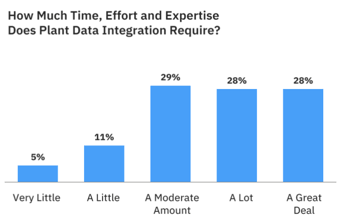 This research aims to learn about current challenges, strategies, and programs for manufacturing data management. Over 300 responded, from manufacturers in various industry segments and of all sizes, working with data from plants in every corner of the world. We uncovered a significant and nearly universal outstanding need: better ways to integrate IT and OT data. We also discovered that there are paths that appear to lead to greater success for those who travel them most aggressively.
Top Performers have made mindset, organization, and staffing changes. They are also far more likely to be using commercial software solutions and adopting modern approaches to accelerate their ability to manage manufacturing data effectively. As a result, a larger percentage of these Top Performers have already made dramatic improvements in business performance. They are in a position to make more gains.
This research aims to learn about current challenges, strategies, and programs for manufacturing data management. Over 300 responded, from manufacturers in various industry segments and of all sizes, working with data from plants in every corner of the world. We uncovered a significant and nearly universal outstanding need: better ways to integrate IT and OT data. We also discovered that there are paths that appear to lead to greater success for those who travel them most aggressively.
Top Performers have made mindset, organization, and staffing changes. They are also far more likely to be using commercial software solutions and adopting modern approaches to accelerate their ability to manage manufacturing data effectively. As a result, a larger percentage of these Top Performers have already made dramatic improvements in business performance. They are in a position to make more gains.
Vision for Business Breakthroughs
The Status Quo is Risky Many companies are now pursuing digital transformation for a new and dramatically different future. With tremendous amounts of data at every level, but especially in production plants, manufacturers know they must do a better job using that data for business decisions. And manufacturing data poses special issues. Most Are on a Path to Industry 4.0 This vision of manufacturing transformation based on digital approaches is often called Industry 4.0. Most manufacturers in every industry and size range indicate that they have multiple Industry 4.0 projects underway. Traditional and Innovative Goals The goals are for agility and performance improvements on business-critical key performance indicators (KPIs). Some companies are also running a data-driven business to make more revenue from services or find other ways to add value.Recommendations for Manufacturing Data Management
The Path Forward Manufacturers must take action to compete with or stay a Top Performer. Formulating a clear strategy with business benefits for Industry 4.0 is a foundation. We recommend that manufacturers follow the lead of Top Performers:- Prioritize manufacturing data management and invest in both the staffing and the programs to succeed.
- Adopt proven commercial technologies such as MES, PLM, and APS where possible first. They will free up precious time and resources and provide a solid foundation for advanced approaches and analytics.
- Structure a program with projects that feed business needs, then proceed logically, in order of the process. For example, ensure data collection and enrichment are in place before investing in analytics projects.
- Create an environment where collaboration among disciplines feels natural, and the shared vision is more compelling than the inherent differences.
 Even for Top Performers, challenges remain. These include data and systems integration, putting IT and OT data into a common context, agreeing on "sources of truth," and identifying data owners.
Note also that this is early days for coherent manufacturing data management. Yes, several times as many of the Top Performers have a program, staff members, capabilities, or dramatic gains on KPIs. Yet they are still only a minority.
There is more to do for every manufacturer. Faster decisions have always made a difference. However, doing things as we've done them may no longer suffice.
Seek New Approaches to Manufacturing Data Management
So, beyond doing what has been possible, we also encourage companies to seek new approaches. Solution providers are advancing their offerings. Some have integrated more functionality into plant systems. New offerings are becoming available to support manufacturing data management now and in the near future.
Be ready to explore new approaches. Validate their fit and ability to help meet your manufacturing data management challenges. Leverage both new and existing technologies and approaches to progress toward your Industry 4.0 vision.
Even for Top Performers, challenges remain. These include data and systems integration, putting IT and OT data into a common context, agreeing on "sources of truth," and identifying data owners.
Note also that this is early days for coherent manufacturing data management. Yes, several times as many of the Top Performers have a program, staff members, capabilities, or dramatic gains on KPIs. Yet they are still only a minority.
There is more to do for every manufacturer. Faster decisions have always made a difference. However, doing things as we've done them may no longer suffice.
Seek New Approaches to Manufacturing Data Management
So, beyond doing what has been possible, we also encourage companies to seek new approaches. Solution providers are advancing their offerings. Some have integrated more functionality into plant systems. New offerings are becoming available to support manufacturing data management now and in the near future.
Be ready to explore new approaches. Validate their fit and ability to help meet your manufacturing data management challenges. Leverage both new and existing technologies and approaches to progress toward your Industry 4.0 vision.
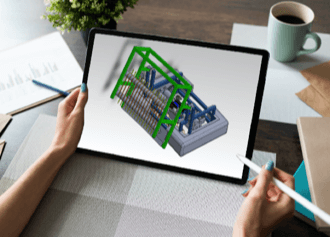 CAD tools have evolved significantly over the last several decades, which has coincided with several platform shifts. With the advancements in tablets combined with evolutions in CAD, we may be at the dawn of the latest shift. Together, CAD on a tablet can offer many benefits. The combination can expand the use of CAD with greater accessibility and flexibility, improved productivity, and better customer service. This blog post discusses why that is and reveals several examples of how CAD on a tablet can benefit a company, especially smaller companies and start-ups.
Read the full guest post on the Shapr3D blog.
[post_title] => How does CAD on mobile devices help?
[post_excerpt] =>
[post_status] => publish
[comment_status] => open
[ping_status] => open
[post_password] =>
[post_name] => mobile-devices-for-cad
[to_ping] =>
[pinged] =>
[post_modified] => 2025-08-13 19:13:15
[post_modified_gmt] => 2025-08-13 23:13:15
[post_content_filtered] =>
[post_parent] => 0
[guid] => https://tech-clarity.com/?p=9723
[menu_order] => 0
[post_type] => post
[post_mime_type] =>
[comment_count] => 0
[filter] => raw
)
[11] => WP_Post Object
(
[ID] => 9629
[post_author] => 2
[post_date] => 2020-09-02 12:42:54
[post_date_gmt] => 2020-09-02 16:42:54
[post_content] =>
CAD tools have evolved significantly over the last several decades, which has coincided with several platform shifts. With the advancements in tablets combined with evolutions in CAD, we may be at the dawn of the latest shift. Together, CAD on a tablet can offer many benefits. The combination can expand the use of CAD with greater accessibility and flexibility, improved productivity, and better customer service. This blog post discusses why that is and reveals several examples of how CAD on a tablet can benefit a company, especially smaller companies and start-ups.
Read the full guest post on the Shapr3D blog.
[post_title] => How does CAD on mobile devices help?
[post_excerpt] =>
[post_status] => publish
[comment_status] => open
[ping_status] => open
[post_password] =>
[post_name] => mobile-devices-for-cad
[to_ping] =>
[pinged] =>
[post_modified] => 2025-08-13 19:13:15
[post_modified_gmt] => 2025-08-13 23:13:15
[post_content_filtered] =>
[post_parent] => 0
[guid] => https://tech-clarity.com/?p=9723
[menu_order] => 0
[post_type] => post
[post_mime_type] =>
[comment_count] => 0
[filter] => raw
)
[11] => WP_Post Object
(
[ID] => 9629
[post_author] => 2
[post_date] => 2020-09-02 12:42:54
[post_date_gmt] => 2020-09-02 16:42:54
[post_content] =>  How are companies adjusting their strategies to survive COVID-19 disruption without losing sight of long-term business sustainability? Read our survey of over 190 companies to find out how they are prioritizing limited resources to maintain focus on success factors including:
How are companies adjusting their strategies to survive COVID-19 disruption without losing sight of long-term business sustainability? Read our survey of over 190 companies to find out how they are prioritizing limited resources to maintain focus on success factors including:
- Addressing changing business models
- Adopting new technology
- Protecting the environment
Table of Contents
- Global Disruptions Compound Business Risk
- Disruption Impacts Company Strategies
- Strategies Understandably Reflect Disconnects
- COVID has Multi-Faceted Impacts
- Recognizing What's Important to Long-Term Success
- Factors Influencing Strategy are Relatively Consistent
- Companies Simply Can't Do Everything
- Business Transformation Leads Sustainability Needs
- Workforce Development Importance Has Increased
- Conclusions and Next Steps
- About the Research
- Acknowledgments
Global Disruptions Compound Business Risk
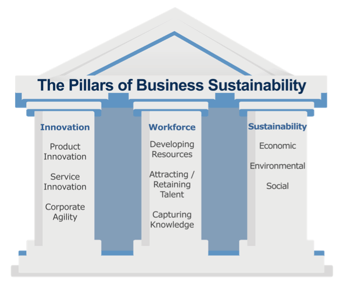 Recognizing Turbulent Times
Recognizing Turbulent Times
Business Transformation Leads Sustainability Needs
Being Aware that Economics are Still the Largest Drivers of SuccessConclusions and Next Steps
Companies are in Crisis due to COVID ware capabilities will help you improve how you integrate mechanical, electronics, and electrical designs?
Tech-Clarity’s buyer’s guide, How to Select the Ideal Solution for Today’s Smart Products: Buyer’s Guide for Electrical Design, explores this question. As companies strive to make modern products smarter, innovative and more affordable, the integration of mechanical, electrical and electronic systems has become critical. Unfortunately mechanical and electrical engineers speak different languages, use separate tools, follow different design approaches and have inherent knowledge silos. Companies that have solutions to overcome these challenges will have a significant advantage in the global economy.
Please enjoy the summary* below. Please visit our sponsor, Siemens, for the full research (registration required).
ware capabilities will help you improve how you integrate mechanical, electronics, and electrical designs?
Tech-Clarity’s buyer’s guide, How to Select the Ideal Solution for Today’s Smart Products: Buyer’s Guide for Electrical Design, explores this question. As companies strive to make modern products smarter, innovative and more affordable, the integration of mechanical, electrical and electronic systems has become critical. Unfortunately mechanical and electrical engineers speak different languages, use separate tools, follow different design approaches and have inherent knowledge silos. Companies that have solutions to overcome these challenges will have a significant advantage in the global economy.
Please enjoy the summary* below. Please visit our sponsor, Siemens, for the full research (registration required).
Table of Contents
- Executive Overview
- The Growing Importance of Electrical Design in Product Development
- Address the Challenges of Electrical Design
- Define the Electrical Distribution System
- Engineer Wiring and Harness Design in the Context of the Complete Product
- Plan Electrical Routing
- Prepare for Manufacturing
- Service Requirements
- Vendor Requirements
- Identify Unique Company Needs
- Conclusion
- Recommendations
- About the Author
- Acknowledgments
Executive Overview
Today’s modern products are rarely purely mechanical. Companies rely on electrical and electronic systems more than ever to make products smarter, add innovation, and lower cost. As such, electrical design has become increasingly critical to product development. However, to be successful, mechanical and electrical designs must seamlessly integrate. The problem is that mechanical and electrical engineers speak different languages, use separate tools, and follow unique development approaches.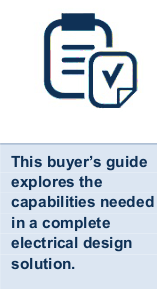 To make matters worse, there are inherent knowledge silos across the two domains. Ignoring these challenges and not finding solutions to break down barriers and bring the teams closer can come at a significant cost to the company. Tech-Clarity research [1] finds collaboration challenges results in:
To make matters worse, there are inherent knowledge silos across the two domains. Ignoring these challenges and not finding solutions to break down barriers and bring the teams closer can come at a significant cost to the company. Tech-Clarity research [1] finds collaboration challenges results in:
- Higher cost
- Market delays
- Missed customer expectations
- Lost revenue opportunities
- Poor quality
About This Guide
This buyer’s guide explores the capabilities needed in a complete electrical design solution. It consists of four major sections covering software tool functionality, service requirements, vendor attributes, and unique company considerations for a complete solution to support electrical design, especially in the context of developing the entire product (Figure 1). Each section includes a checklist of key requirements to consider when selecting a solution. This guide is not an all-encompassing requirements list. It provides a high-level overview. PCB Design is also an important component of electrical and electronic systems design, but for the purposes of this guide, it was considered out of scope. For more information on a complete integrated product development suite beyond electrical design, read the Tech-Clarity report, “Buyer’s Guide for Engineers: How to Select Essential Tools for Product Design.”
This guide is not an all-encompassing requirements list. It provides a high-level overview. PCB Design is also an important component of electrical and electronic systems design, but for the purposes of this guide, it was considered out of scope. For more information on a complete integrated product development suite beyond electrical design, read the Tech-Clarity report, “Buyer’s Guide for Engineers: How to Select Essential Tools for Product Design.”
Recommendations
Based on industry experience and research for this report, Tech-Clarity offers the following recommendations:- Create a digital thread across your development process with an end-to-end integrated product development suite that includes electrical design.
- Consider solutions that support defining the electrical distribution system, wiring and harness design, electrical routing, and preparing for
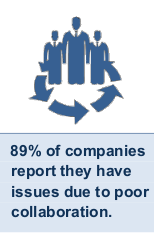 manufacturing.
manufacturing. - Support collaboration across mechanical and electrical engineers. Wiring and harness design should be done in the context of the entire product and exchanging ECAD / MCAD data should be automated.
- Ensure you have traceability and changes automatically update across the entire product, including the electrical design.
- Use an electrical design solution that will support the development of a single high-fidelity model to support your digitalization strategy and create a single source of truth.
- Ensure your solution will have the support behind it to make it a success at your company.
- Select a vendor who will be a good partner.
 What does effective storytelling have to do with succeeding with Industry 4.0? Plenty.
What does effective storytelling have to do with succeeding with Industry 4.0? Plenty.
 [post_title] => Succeeding with Industry 4.0: Understanding the Whole Elephant (article)
[post_excerpt] =>
[post_status] => publish
[comment_status] => open
[ping_status] => open
[post_password] =>
[post_name] => succeeding-with-industry4-0
[to_ping] =>
[pinged] =>
[post_modified] => 2022-11-14 22:25:56
[post_modified_gmt] => 2022-11-15 03:25:56
[post_content_filtered] =>
[post_parent] => 0
[guid] => https://tech-clarity.com/?p=9537
[menu_order] => 0
[post_type] => post
[post_mime_type] =>
[comment_count] => 0
[filter] => raw
)
[14] => WP_Post Object
(
[ID] => 9581
[post_author] => 2572
[post_date] => 2020-08-26 14:07:03
[post_date_gmt] => 2020-08-26 18:07:03
[post_content] =>
[post_title] => Succeeding with Industry 4.0: Understanding the Whole Elephant (article)
[post_excerpt] =>
[post_status] => publish
[comment_status] => open
[ping_status] => open
[post_password] =>
[post_name] => succeeding-with-industry4-0
[to_ping] =>
[pinged] =>
[post_modified] => 2022-11-14 22:25:56
[post_modified_gmt] => 2022-11-15 03:25:56
[post_content_filtered] =>
[post_parent] => 0
[guid] => https://tech-clarity.com/?p=9537
[menu_order] => 0
[post_type] => post
[post_mime_type] =>
[comment_count] => 0
[filter] => raw
)
[14] => WP_Post Object
(
[ID] => 9581
[post_author] => 2572
[post_date] => 2020-08-26 14:07:03
[post_date_gmt] => 2020-08-26 18:07:03
[post_content] =>  How can schools best prepare today's STEM students to close the engineering skills gap so that new graduates are ready for the real world?
Tech-Clarity’s research report, “How Academia Can Close the Engineering Skills Gap in the Age of Digitalization” explores this question. This research shares a global perspective on what colleges and universities are doing to develop the engineering talent needed in the age of digitalization. It also examines the impact COVID-19 has had on instructions and offers lessons learned that can be used to improve the educational experience in the Fall, as well as in the future.
Please enjoy the summary* below. For the full research, please visit our sponsor, Siemens (registration required).
How can schools best prepare today's STEM students to close the engineering skills gap so that new graduates are ready for the real world?
Tech-Clarity’s research report, “How Academia Can Close the Engineering Skills Gap in the Age of Digitalization” explores this question. This research shares a global perspective on what colleges and universities are doing to develop the engineering talent needed in the age of digitalization. It also examines the impact COVID-19 has had on instructions and offers lessons learned that can be used to improve the educational experience in the Fall, as well as in the future.
Please enjoy the summary* below. For the full research, please visit our sponsor, Siemens (registration required).
Table of Contents
- Executive Summary
- Meet Industry Needs
- Embrace Digitalization
- Prepare for the New Corporate Culture
- Opportunities for Improvement
- Adapt to the Needs of the 2020s
- 1. Offer Long Term, Realistic Projects
- 2. Reshape the Curriculum
- 3. Leverage Software
- 4. Enhance Learning with Digital Twins
- 5. Enrich Learning with Technology
- 6. Develop Collaboration Skills
- 7. Prepare for Cross-Functional Horizontal Teams
- 8. Build Resumes and Offer Career Insight
- 9. Partner with Industry for Technology Thought Leadership
- Conclusions
- Recommendations
- Acknowledgments
Executive Summary
 Requirements for New Engineers
Industry needs more engineering graduates. New engineers must be comfortable with cross discipline projects, a range of technology including digitalization, and horizontal organizations. Along with this deep skillset, industry wants engineers to be strong problem solvers with the aptitude to apply technology to solve problems. Previous Tech-Clarity research finds that industry believes schools could do better to meet these requirements.
Requirements for Learning Approaches
Much of this is due to the traditional lecture-based approach to education. By reshaping the curriculum to focus on project-based learning and partnering with industry thought leaders, there is tremendous opportunity to improve students’ education.
Requirements for New Engineers
Industry needs more engineering graduates. New engineers must be comfortable with cross discipline projects, a range of technology including digitalization, and horizontal organizations. Along with this deep skillset, industry wants engineers to be strong problem solvers with the aptitude to apply technology to solve problems. Previous Tech-Clarity research finds that industry believes schools could do better to meet these requirements.
Requirements for Learning Approaches
Much of this is due to the traditional lecture-based approach to education. By reshaping the curriculum to focus on project-based learning and partnering with industry thought leaders, there is tremendous opportunity to improve students’ education.
This Research
This research builds upon past Tech-Clarity research, Close the Engineering Skills Gap when over two hundred companies were surveyed to identify specific skills industry wants to see in graduating engineers. For this new research, educators from around the world were interviewed to understand what schools are doing to better prepare their students. This report details different perspectives and shares advice to evolve the curriculum to meet today’s needs. COVID-19 The research explores how some schools have embraced digitalization, incorporated the latest technology trends, and leveraged industry partnerships. It also shares lessons learned as a result of the COVID-19 pandemic. Schools should:
Schools should:
- Offer long term realistic projects
- Reshape the curriculum
- Leverage software
- Enhance learning with digital twins
- Enrich learning with technology
- Develop collaboration skills
- Prepare for horizontal cross-functional teams
- Build resumes and offer career insight
- Partner with industry for technology thought leadership
Recommendations
Next Steps
 Based on this research and our experience, Tech-Clarity offers the following recommendations:
Based on this research and our experience, Tech-Clarity offers the following recommendations:
-
Restructure academic programs to maximize project-based learning opportunities. This can be done as part of the regular curriculum or as extracurricular actives.
-
Recognize the numerous benefits of project-based learning for both students and industry. Design programs to ensure that participants realize these benefits.
-
Involve industry to provide real-world problems as well as mentorships and internships to ensure students have the opportunity to learn from their experiences and expertise.
-
Projects need to develop problem-solving and collaboration skills, while exposing engineers to multi-discipline work
-
Reshape the curriculum and remove content that is less valuable for today’s engineers.
-
Bring in industry thought leaders and subject matter experts into the classroom.
 What should supply chain-centric innovators consider when looking for PLM? How has the PLM landscape changed over the last several years, and how does SaaS fit into that picture?
Please enjoy the summary* below. For the full research, please visit our sponsor, Upchain (registration required).
What should supply chain-centric innovators consider when looking for PLM? How has the PLM landscape changed over the last several years, and how does SaaS fit into that picture?
Please enjoy the summary* below. For the full research, please visit our sponsor, Upchain (registration required).
Table of Contents
- The State of Cloud PLM
- Why Cloud SaaS is so Compelling
- Current Times Increase Cloud Appeal
- Choosing the Right PLM
- The Shifting Cloud versus Capabilities Tradeoff
- Recommendations and Next Steps
- Acknowledgments
The State of Cloud PLM
Significant Benefits of the Cloud "Cloud PLM" is not a Cookie Cutter Decision
"Cloud PLM" is not a Cookie Cutter Decision
Recommendations and Next Steps
Investigate SaaS Solutions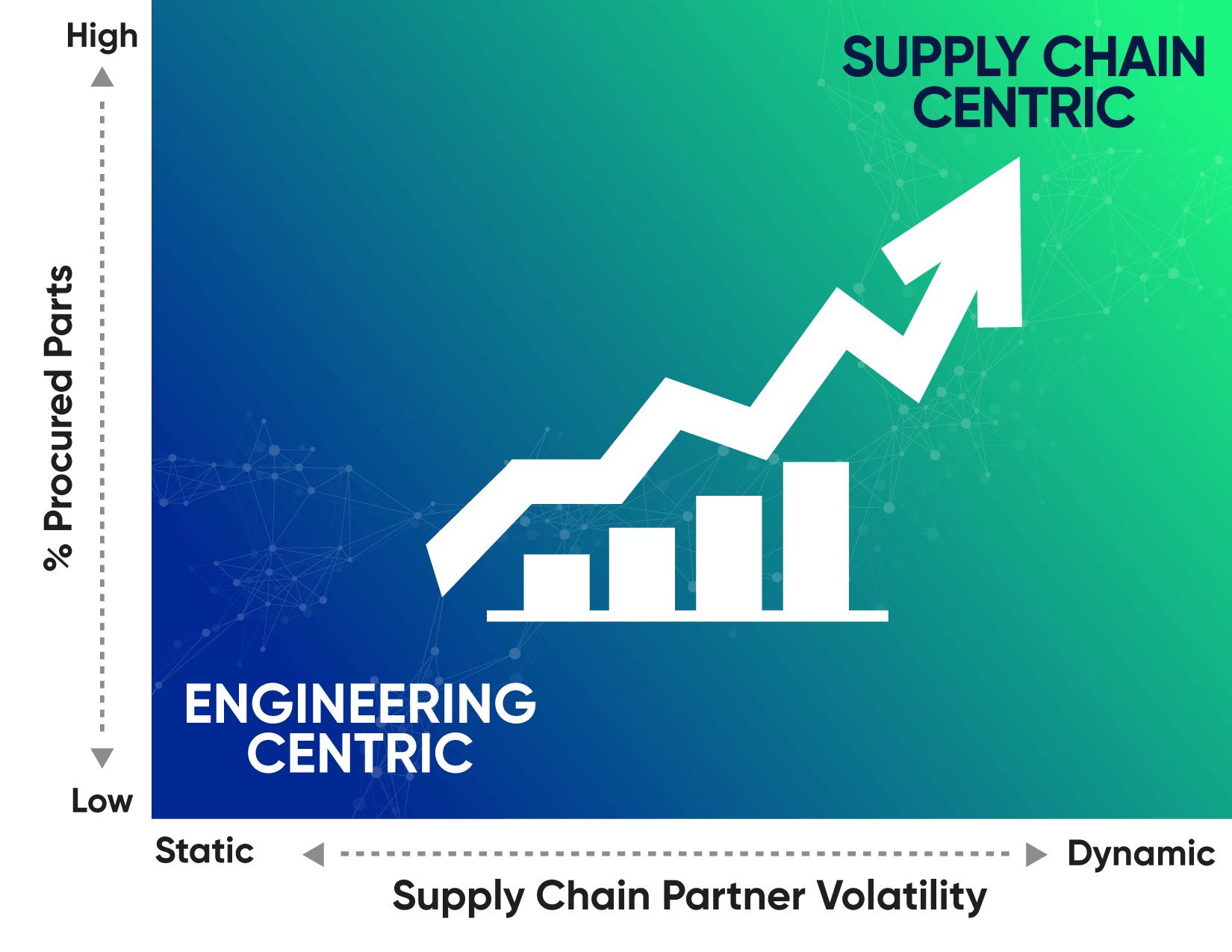 Choose the Right SaaS PLM Solution
Choose the Right SaaS PLM Solution
 Where should mold makers focus to boost business profitability?
With significant business pressures and the technical complexity of injection molding, mold making is a challenging business. While tool makers face many obstacles, those surveyed identified five top challenges that make it harder to maintain a successful business. This blog post reveals these top five challenges, and the strategies to deal with them.
Read the full guest post on the Siemens NX Design Blog.
[post_title] => How Mold Makers Can Improve Their Business
[post_excerpt] =>
[post_status] => publish
[comment_status] => open
[ping_status] => open
[post_password] =>
[post_name] => how-mold-makers-can-improve-their-business-guest-post
[to_ping] =>
[pinged] =>
[post_modified] => 2024-01-25 18:36:48
[post_modified_gmt] => 2024-01-25 23:36:48
[post_content_filtered] =>
[post_parent] => 0
[guid] => https://tech-clarity.com/?p=9130
[menu_order] => 0
[post_type] => post
[post_mime_type] =>
[comment_count] => 0
[filter] => raw
)
[17] => WP_Post Object
(
[ID] => 9332
[post_author] => 2
[post_date] => 2020-07-08 07:30:24
[post_date_gmt] => 2020-07-08 11:30:24
[post_content] =>
Where should mold makers focus to boost business profitability?
With significant business pressures and the technical complexity of injection molding, mold making is a challenging business. While tool makers face many obstacles, those surveyed identified five top challenges that make it harder to maintain a successful business. This blog post reveals these top five challenges, and the strategies to deal with them.
Read the full guest post on the Siemens NX Design Blog.
[post_title] => How Mold Makers Can Improve Their Business
[post_excerpt] =>
[post_status] => publish
[comment_status] => open
[ping_status] => open
[post_password] =>
[post_name] => how-mold-makers-can-improve-their-business-guest-post
[to_ping] =>
[pinged] =>
[post_modified] => 2024-01-25 18:36:48
[post_modified_gmt] => 2024-01-25 23:36:48
[post_content_filtered] =>
[post_parent] => 0
[guid] => https://tech-clarity.com/?p=9130
[menu_order] => 0
[post_type] => post
[post_mime_type] =>
[comment_count] => 0
[filter] => raw
)
[17] => WP_Post Object
(
[ID] => 9332
[post_author] => 2
[post_date] => 2020-07-08 07:30:24
[post_date_gmt] => 2020-07-08 11:30:24
[post_content] =>  How can manufacturers most effectively design, develop, and launch custom-engineered products that must be engineered to customer specifications? Tech-Clarity's eBook, Bringing Custom-Engineered Products to Market, shares survey data from over 200 companies to offer insights and best practices.
Please enjoy the summary* below. Click here for the full report, thank you to our sponsor Propel (registration required).
How can manufacturers most effectively design, develop, and launch custom-engineered products that must be engineered to customer specifications? Tech-Clarity's eBook, Bringing Custom-Engineered Products to Market, shares survey data from over 200 companies to offer insights and best practices.
Please enjoy the summary* below. Click here for the full report, thank you to our sponsor Propel (registration required).
Table of Contents
- Custom-Engineered Products are Compelling
- What Does Profitable Customization Look Like?
- Developing Engineered Products is Difficult
- Benchmarking Engineered Product Performance
- Top Performers Collaborate more Readily
- Top Performers Integrate Data and Processes
- Top Performers Integrate Systems
- Conclusions and Next Steps
- About the Research
- Acknowledgments
Custom-Engineered Products are Compelling
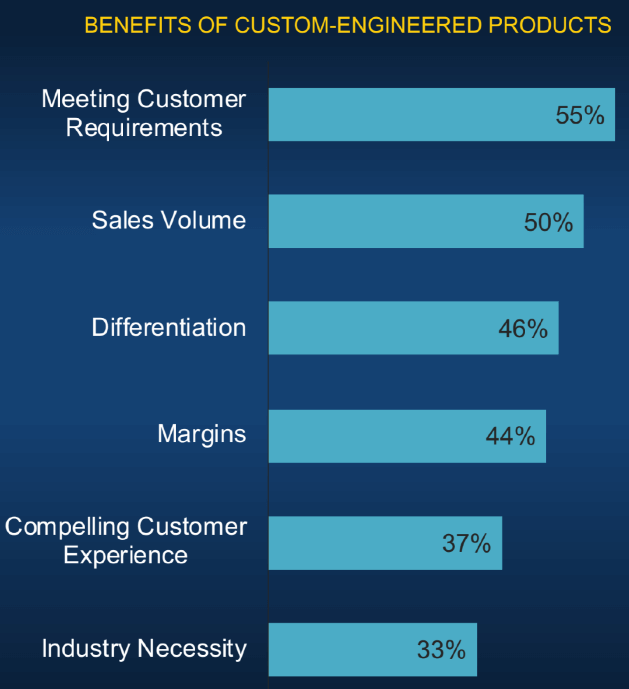 Custom-Engineering Increases the Top Line
Product customization has increased in recent years and is expected to continue to grow "significantly" for most companies over the next several years. What's driving this expansion? The benefits reported by our survey respondents help explain why.
Customization Improves the Bottom Line
Driving higher sales is no guarantee of greater profitability. If custom-engineering results in selling products too cheaply or allowing costs to get out of control, the company can still lose money. Fortunately, 44% of respondents also share the custom-engineered products help them achieve higher sales margins. Whatever the cause, higher margins help ensure that the top-line benefits of custom-engineered products fall to the bottom line.
Custom-Engineering Increases the Top Line
Product customization has increased in recent years and is expected to continue to grow "significantly" for most companies over the next several years. What's driving this expansion? The benefits reported by our survey respondents help explain why.
Customization Improves the Bottom Line
Driving higher sales is no guarantee of greater profitability. If custom-engineering results in selling products too cheaply or allowing costs to get out of control, the company can still lose money. Fortunately, 44% of respondents also share the custom-engineered products help them achieve higher sales margins. Whatever the cause, higher margins help ensure that the top-line benefits of custom-engineered products fall to the bottom line.
What Does Profitable Customization Look Like?
Custom Markets Require NPDI Speed Speed without control, however, can be counterproductive. It could lead to errors or delays if companies don’t design quality into their designs upfront. These problems can have a significant impact considering that respondents say most of their engineering customization happens during customer inquiry / investigation phase and/or during quote / proposal stage – when time is at a premium.
Speed without control, however, can be counterproductive. It could lead to errors or delays if companies don’t design quality into their designs upfront. These problems can have a significant impact considering that respondents say most of their engineering customization happens during customer inquiry / investigation phase and/or during quote / proposal stage – when time is at a premium.
Developing Engineered Products is Difficult
NPDI and Engineering Challenges Impact Performance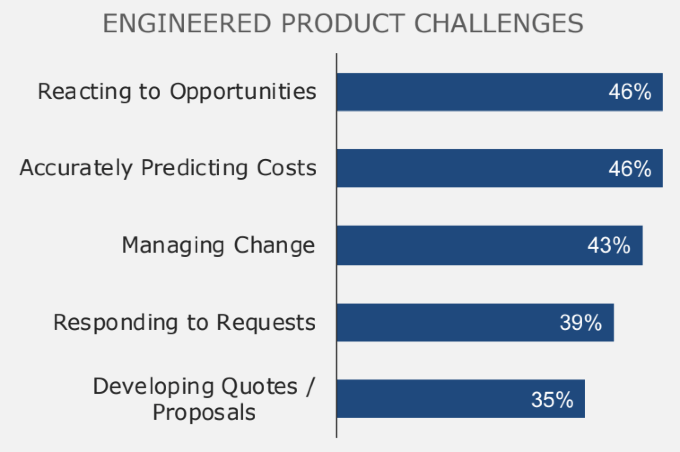 The challenges highlighted create serious consequences. Survey respondents indicate that these challenges lead to low margins, inefficiency, unhappy customers, rework/scrap, lost orders, missed market opportunities, and more. These are the negative business consequences of speed without control.
The challenges highlighted create serious consequences. Survey respondents indicate that these challenges lead to low margins, inefficiency, unhappy customers, rework/scrap, lost orders, missed market opportunities, and more. These are the negative business consequences of speed without control.
Conclusions and Next Steps
Custom-Engineered Products Deliver Benefits Offering custom-engineered products drives significant business benefits including increased top and bottom-line results. The Top Performers, the 23% with the highest performance in critical market success criteria, are even more likely to enjoy these benefits. They are also more likely to report benefits that aren’t achieved as frequently by Others. For example, about one-half of Top Performers report employee productivity as a benefit of offering custom-engineered products, which is are more than twice as frequently as Others. It’s likely that their better practices allow them not only to achieve great benefits but also to do so in a more streamlined and efficient way. Next Steps Product customization is growing. For those companies that are already taking advantage of this opportunity, the best practices identified by this research can serve as a guide for continuous improvement. For others that are embarking on adopting a custom-engineered product strategy, the practices of the Top Performers can be used to gauge your company’s readiness to deliver the speed and control required to succeed. *This summary is an abbreviated version of the research and does not contain the full content. For the full research, please visit our sponsor Propel (registration required). If you have difficulty obtaining a copy of the research, please contact us. [post_title] => Bringing Custom-Engineered Products to Market (survey results) [post_excerpt] => [post_status] => publish [comment_status] => open [ping_status] => open [post_password] => [post_name] => custom-engineered-products [to_ping] => [pinged] => [post_modified] => 2025-01-31 11:40:12 [post_modified_gmt] => 2025-01-31 16:40:12 [post_content_filtered] => [post_parent] => 0 [guid] => https://tech-clarity.com/?p=9332 [menu_order] => 0 [post_type] => post [post_mime_type] => [comment_count] => 0 [filter] => raw ) [18] => WP_Post Object ( [ID] => 9403 [post_author] => 2574 [post_date] => 2020-07-02 21:31:47 [post_date_gmt] => 2020-07-03 01:31:47 [post_content] => Are your production approaches as smart as they are sophisticated? Before you answer, consider whether all the information about each aspect of the fab is readily available. Imagine the benefits in flexibility, quality, costs, agility, speed, confidence... this is the vision of smart manufacturing. To capture today’s myriad opportunities, these improvements are essential. The good news is, it’s possible today. Please visit our sponsor Siemens for the full webcast (registration required).
Are your production approaches as smart as they are sophisticated? Before you answer, consider whether all the information about each aspect of the fab is readily available. Imagine the benefits in flexibility, quality, costs, agility, speed, confidence... this is the vision of smart manufacturing. To capture today’s myriad opportunities, these improvements are essential. The good news is, it’s possible today. Please visit our sponsor Siemens for the full webcast (registration required).
Smart Manufacturing in Semiconductor Manufacturing and Fabrication
Join as Julie Fraser discusses a paper on Smart Manufacturing for Semiconductor she wrote before joining the Tech-Clarity team. Key Takeaways:- What is in MES beyond track and trace
- How to tie supply chain and manufacturing operations together
- How big data analytics differs from the analysis of large quantities of data
- How a digital twin boosts performance
- How smart manufacturing solutions weave a connected threat for a more agile enterprise.
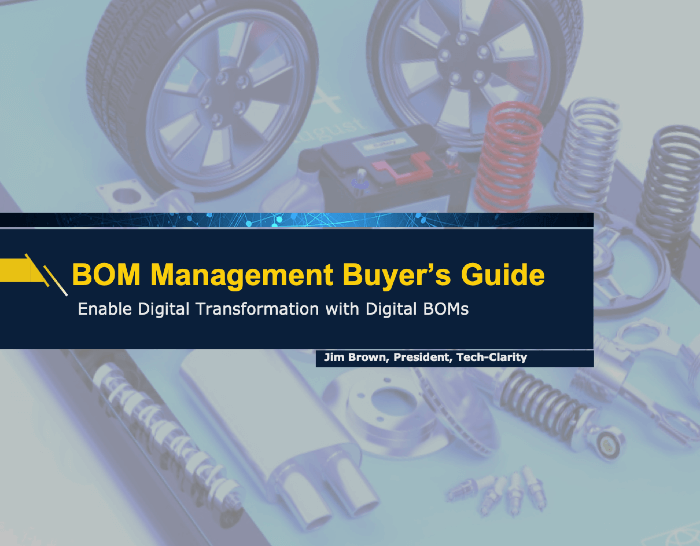 What is needed for manufacturers to improve the maturity of BOM-related processes to help to manage complexity, improve efficiency, prevent mistakes, and enhance collaboration across departments and the supply chain? Read our buyer's guide to find out.
Please enjoy the summary below. Click here for the full report, thank you to our sponsor PTC.
What is needed for manufacturers to improve the maturity of BOM-related processes to help to manage complexity, improve efficiency, prevent mistakes, and enhance collaboration across departments and the supply chain? Read our buyer's guide to find out.
Please enjoy the summary below. Click here for the full report, thank you to our sponsor PTC.
Table of Contents
- Introducing the Buyer's Guide
- Diagnosing BOM Management Issues
- The BOM Management Status Quo
- The BOM Management Business Case
- Analyze BOM Management Solution Capabilities
- Assess Service Requirements
- Consider Vendor Requirements
- Special Considerations
- Prepare for the Digital Enterprise
- Conclusion
- Recommendations
- About the Author
- About the Research
- Acknowledgments
Introducing the Buyer's Guide
BOM Fundamentals Managing Bills of Material (BOMs) is a fundamental need for any manufacturer. Without effective control of product structures, companies struggle with inefficiency and errors. On the other hand, improving the maturity of BOM-related processes helps manage complexity, improve efficiency, prevent mistakes, and enhance collaboration across departments and the supply chain. Improving the maturity of BOM-related processes helps manage complexity, improve efficiency, prevent mistakes, and enhance collaboration across departments and the supply chain. The resulting benefits can be strategic, leading to increased agility and faster time to market that impact top-line financial performance. This Buyer's Guide is a reference tool for manufacturers selecting a system to improve the maturity of their BOM. It also shares that digital BOM management is critical to support digital transformation initiatives including the digital twin, the Internet of Things (IoT), Virtual Reality (VR), and Augmented Reality (AR).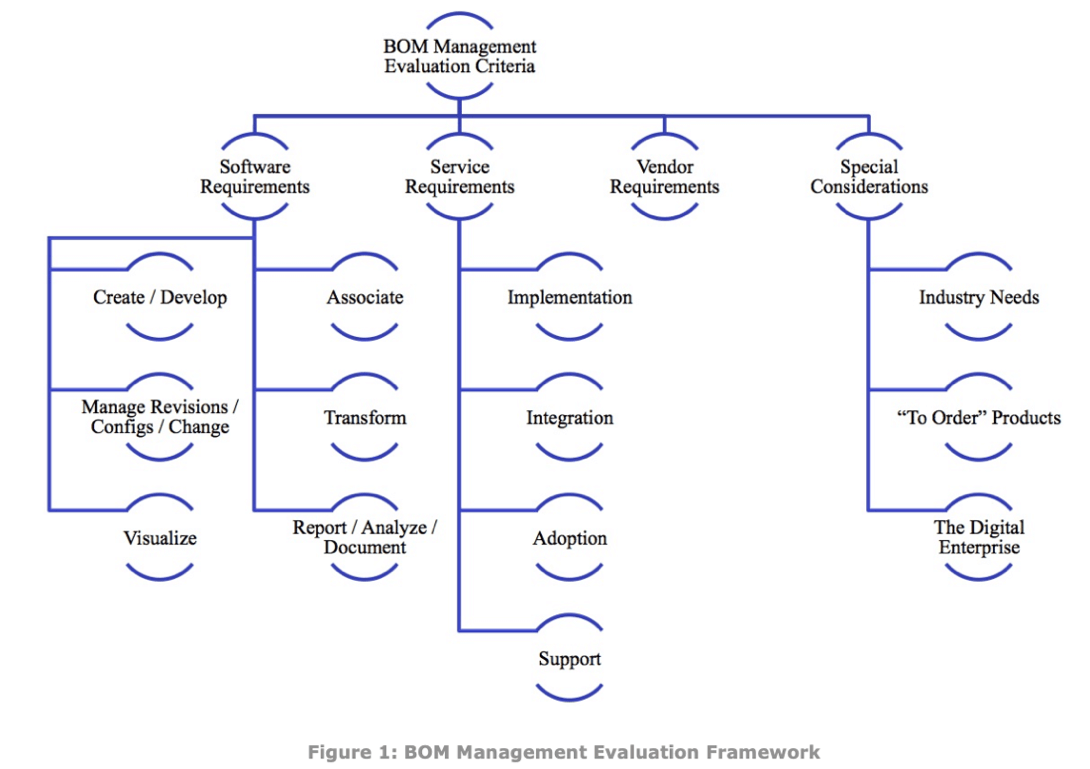 Diagnosing BOM Management Issues
Diagnosing BOM Management Issues
- Errors in manufacturing
- Poor first pass yield
- Ordering the wrong parts
- Delays due to part shortages
- Inability to confidently adopt engineering changes
- Slow time to full volume production
- Late identification of manufacturability or serviceability flaws
- Poor traceability
- Compliance issues or excess effort to comply
- Scrap and rework
- Slow review and approval processes
- Develop Product Structures
- Manage Revisions, Configurations, Change
- Visualize Products
- Associate Information
- Transform BOMs
- Report / Analyze / Document
 It’s important to recognize that these requirements are in addition to the basic needs of managing product data, as most companies will extend their PDM or PLM environment to manage BOMs. These solutions provide platform capabilities such as access control and IP protection that serve as a critical foundation for effective BOM management.
It’s important to recognize that these requirements are in addition to the basic needs of managing product data, as most companies will extend their PDM or PLM environment to manage BOMs. These solutions provide platform capabilities such as access control and IP protection that serve as a critical foundation for effective BOM management.
Conclusion
Recommendations
Based on industry experience and research on this report, Tech-Clarity offers the following recommendations:- Think big, but remain agile and take BOM management improvements in steps
- Recognize the importance of accurate, complete, timely, and accessible product structures
- Know your needs
- Understand the value
- Look for functionality, but extend requirements to vendor and service
- Consider any special needs for your business, industry, or geography
- Build the foundation for the digital enterprise, recognizing that BOM management is a key enabler
- Get started
- Enabling remote work
- Eliminating “wasted-time”
- Reducing design cycles
- Improving efficiency
- Preparing for “what’s next” by becoming more resilient and flexible


 [post_title] => Product Innovation in the new Normal (webcast)
[post_excerpt] =>
[post_status] => publish
[comment_status] => open
[ping_status] => open
[post_password] =>
[post_name] => product-innovation-webcast
[to_ping] =>
[pinged] =>
[post_modified] => 2022-11-14 22:27:04
[post_modified_gmt] => 2022-11-15 03:27:04
[post_content_filtered] =>
[post_parent] => 0
[guid] => https://tech-clarity.com/?p=10043
[menu_order] => 0
[post_type] => post
[post_mime_type] =>
[comment_count] => 0
[filter] => raw
)
[comment_count] => 0
[current_comment] => -1
[found_posts] => 802
[max_num_pages] => 41
[max_num_comment_pages] => 0
[is_single] =>
[is_preview] =>
[is_page] =>
[is_archive] =>
[is_date] =>
[is_year] =>
[is_month] =>
[is_day] =>
[is_time] =>
[is_author] =>
[is_category] =>
[is_tag] =>
[is_tax] =>
[is_search] =>
[is_feed] =>
[is_comment_feed] =>
[is_trackback] =>
[is_home] => 1
[is_privacy_policy] =>
[is_404] =>
[is_embed] =>
[is_paged] =>
[is_admin] =>
[is_attachment] =>
[is_singular] =>
[is_robots] =>
[is_favicon] =>
[is_posts_page] =>
[is_post_type_archive] =>
[query_vars_hash:WP_Query:private] => 8ce30905d1bea3aedc4b9bd736428d36
[query_vars_changed:WP_Query:private] => 1
[thumbnails_cached] =>
[allow_query_attachment_by_filename:protected] =>
[stopwords:WP_Query:private] =>
[compat_fields:WP_Query:private] => Array
(
[0] => query_vars_hash
[1] => query_vars_changed
)
[compat_methods:WP_Query:private] => Array
(
[0] => init_query_flags
[1] => parse_tax_query
)
[query_cache_key:WP_Query:private] => wp_query:da0e25ec1476d7d8b1d52e7ef5f6147d:0.80407500 17638371530.81296500 1763837153
)
[post_title] => Product Innovation in the new Normal (webcast)
[post_excerpt] =>
[post_status] => publish
[comment_status] => open
[ping_status] => open
[post_password] =>
[post_name] => product-innovation-webcast
[to_ping] =>
[pinged] =>
[post_modified] => 2022-11-14 22:27:04
[post_modified_gmt] => 2022-11-15 03:27:04
[post_content_filtered] =>
[post_parent] => 0
[guid] => https://tech-clarity.com/?p=10043
[menu_order] => 0
[post_type] => post
[post_mime_type] =>
[comment_count] => 0
[filter] => raw
)
[comment_count] => 0
[current_comment] => -1
[found_posts] => 802
[max_num_pages] => 41
[max_num_comment_pages] => 0
[is_single] =>
[is_preview] =>
[is_page] =>
[is_archive] =>
[is_date] =>
[is_year] =>
[is_month] =>
[is_day] =>
[is_time] =>
[is_author] =>
[is_category] =>
[is_tag] =>
[is_tax] =>
[is_search] =>
[is_feed] =>
[is_comment_feed] =>
[is_trackback] =>
[is_home] => 1
[is_privacy_policy] =>
[is_404] =>
[is_embed] =>
[is_paged] =>
[is_admin] =>
[is_attachment] =>
[is_singular] =>
[is_robots] =>
[is_favicon] =>
[is_posts_page] =>
[is_post_type_archive] =>
[query_vars_hash:WP_Query:private] => 8ce30905d1bea3aedc4b9bd736428d36
[query_vars_changed:WP_Query:private] => 1
[thumbnails_cached] =>
[allow_query_attachment_by_filename:protected] =>
[stopwords:WP_Query:private] =>
[compat_fields:WP_Query:private] => Array
(
[0] => query_vars_hash
[1] => query_vars_changed
)
[compat_methods:WP_Query:private] => Array
(
[0] => init_query_flags
[1] => parse_tax_query
)
[query_cache_key:WP_Query:private] => wp_query:da0e25ec1476d7d8b1d52e7ef5f6147d:0.80407500 17638371530.81296500 1763837153
)
All Results for "All"
Analyst Perspectives on Autodesk University 2020
What did leading engineering software industry analysts think of the first virtual Autodesk University? What are their key takeaways from AU2020? Hear the discussion with Lifecycle Insights Chad Jackson, CIMdata’s Stan Przybylinksi, and Tech-Clarity’s Jim Brown led by Taxal’s Allan Behrens.
Roadmap: COVID-19 and Digital Transformation in Procurement Leaders (article)
Have procurement organizations re-focused digital transformation investments due to COVID-19? Yes. Priorities are radically different, as the research shows behind Roadmap – COVID-19 and Digital Transformation: Unique Research Into Investment Priorities. What has changed is that companies are more focused on creating abilities to work remotely, connect, see, and analyze what’s going on in supply….
IoT Machine Monitoring and Optimization (survey results)
How do companies improve profitability by monitoring, analyzing, and optimizing equipment via the Industrial IoT? How has the COVID-19 pandemic impacted their plans? See what our survey of over 200 companies that manufacture, operate, service, sell, distribute, install, and/or integrate equipment finds about how the leaders operate in Tech-Clarity’s Pillars of Machine Monitoring and Optimization….
How to Benefit from Industry 4.0 Trends in 2021 (webcast)
How can manufacturers maximize value from their digital transformation efforts in 2021? In these uncertain times, it matters. There are some basics to leveraging Industry 4.0 trends. Success may be closer to your grasp than you realize. This live webinar has passed, but please click here to watch it free, on-demand. Find out where trends…
What’s the Cost of Poor Collaboration?
How much does poor collaboration cost your company? Tech-Clarity’s eBook, What’s the Cost of Poor Collaboration? examines this topic for product development, sharing survey results from 155 manufacturers. Collaboration impacts every part of product development, and products cannot be developed or brought to market without it. While collaboration can be abstract and hard to measure,…
The Challenge of Manufacturing Data Management (article)
What happens when automation and plant IT teams get past their differences and work together effectively? A chance for the company to outperform the competition and make progress on Industry 4.0 projects, based on more coherent manufacturing data management. In our recent research, Top Performers were more likely to have tightly connected IT and automation…
Cloud Readiness (infographic)
What should your company consider when transitioning to the cloud for innovation and engineering? Our new infographic identifies key considerations ranging from strategy through adoption. See the infographics for some important factors related to strategy, functionality, governance, existing solutions, and your transition. You can also learn more about cloud solutions from Siemens Digital Industries Software, our…
Meeting the Manufacturing Data Management Challenge (webcast)
What do manufacturers need to do to succeed and get results from their Industry 4.0 efforts? In this webcast, Julie Fraser revealed a few significant findings of research of over 300 companies on the topic of manufacturing data management. It’s a multi-faceted challenge in which people, processes, and technology all matter. This webcast explains the…
The Manufacturing Data Challenge (survey results)
How do companies make progress toward Industry 4.0? Based on our research, those who invest in people, processes, and technology for manufacturing data management have made more strides in Industry 4.0. Manufacturing Data Management: Lessons from Top Performers explores the many challenges of bringing together all the data production facilities need. Please enjoy the summary*…
How does CAD on mobile devices help?
Are mobile devices ready for CAD? Is CAD ready for mobile devices? When should you consider use cases for CAD on a tablet? CAD tools have evolved significantly over the last several decades, which has coincided with several platform shifts. With the advancements in tablets combined with evolutions in CAD, we may be at the…
Business Sustainability and Survival 2020 (survey results)
How are companies adjusting their strategies to survive COVID-19 disruption without losing sight of long-term business sustainability? Read our survey of over 190 companies to find out how they are prioritizing limited resources to maintain focus on success factors including: Addressing changing business models Adopting new technology Protecting the environment Please enjoy the summary* below….
Buyer’s Guide for Electrical Design
What software capabilities will help you improve how you integrate mechanical, electronics, and electrical designs? Tech-Clarity’s buyer’s guide, How to Select the Ideal Solution for Today’s Smart Products: Buyer’s Guide for Electrical Design, explores this question. As companies strive to make modern products smarter, innovative and more affordable, the integration of mechanical, electrical and electronic…
Succeeding with Industry 4.0: Understanding the Whole Elephant (article)
What does effective storytelling have to do with succeeding with Industry 4.0? Plenty. With the right narrative by level and function, the whole company can engage with Industry 4.0 strategy. At that point, everyone, whether top-level management or shop-floor workers, can buy-in. Once they do, they can participate effectively in setting the standards required to…
Engineering Skills Gap in the Age of Digitalization
How can schools best prepare today’s STEM students to close the engineering skills gap so that new graduates are ready for the real world? Tech-Clarity’s research report, “How Academia Can Close the Engineering Skills Gap in the Age of Digitalization” explores this question. This research shares a global perspective on what colleges and universities are…
Supply Chain-Centric Cloud PLM (eBook)
What should supply chain-centric innovators consider when looking for PLM? How has the PLM landscape changed over the last several years, and how does SaaS fit into that picture? Please enjoy the summary* below. For the full research, please visit our sponsor, Upchain (registration required). Table of Contents The State of Cloud PLM Why Cloud SaaS is…
How Mold Makers Can Improve Their Business
Where should mold makers focus to boost business profitability? With significant business pressures and the technical complexity of injection molding, mold making is a challenging business. While tool makers face many obstacles, those surveyed identified five top challenges that make it harder to maintain a successful business. This blog post reveals these top five challenges,…
Bringing Custom-Engineered Products to Market (survey results)
How can manufacturers most effectively design, develop, and launch custom-engineered products that must be engineered to customer specifications? Tech-Clarity’s eBook, Bringing Custom-Engineered Products to Market, shares survey data from over 200 companies to offer insights and best practices. Please enjoy the summary* below. Click here for the full report, thank you to our sponsor Propel (registration…
Digital Twin and Smart Manufacturing for Semiconductor (webcast)
Are your production approaches as smart as they are sophisticated? Before you answer, consider whether all the information about each aspect of the fab is readily available. Imagine the benefits in flexibility, quality, costs, agility, speed, confidence… this is the vision of smart manufacturing. To capture today’s myriad opportunities, these improvements are essential. The good…
BOM Management Buyer’s Guide (white paper)
What is needed for manufacturers to improve the maturity of BOM-related processes to help to manage complexity, improve efficiency, prevent mistakes, and enhance collaboration across departments and the supply chain? Read our buyer’s guide to find out. Please enjoy the summary below. Click here for the full report, thank you to our sponsor PTC. …

